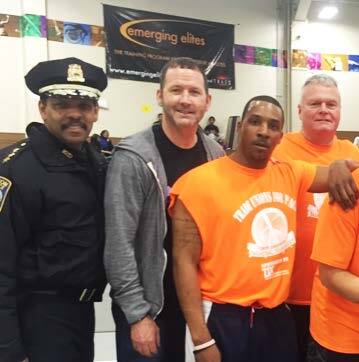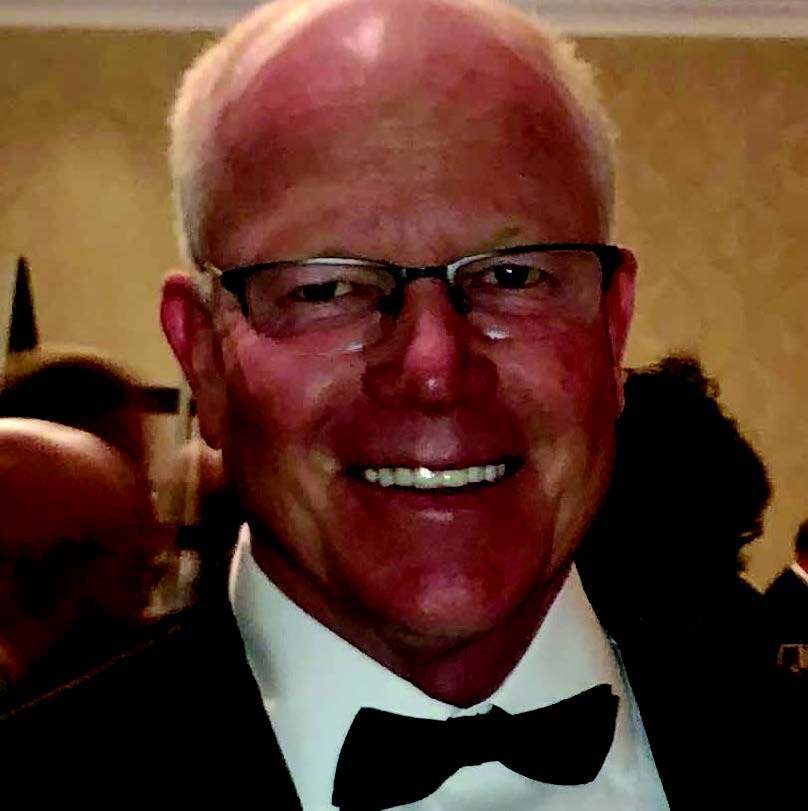FULL CIRCLE - Good Sense and Smart Choices
“It just sort of happened,” was Jack Cleary’s way of describing making it into CM, playing varsity sports and going on to MIT. But everything else? Those were lessons in succeeding at the difficult things.
CM YEARS
The one and only scholarship awarded in 1960 by the local chapter of the Knights of Columbus helped Jack Cleary ’64, a West Roxbury native, attend the relatively new school in his neighborhood. “My dad worked in the post office and so obviously we had no money,” recalls Cleary. What he knew about Catholic Memorial was only what he’d heard from his peer group. What he experienced upon arriving was “…the brothers were pretty demanding, and in some cases, frightening. That was back in the days when you’d pay a real price if you misbehaved,” says Cleary. But what stood out most of all was the athletics. “I did well academically, but that wasn’t my primary focus,” he says. “My primary focus and source of satisfaction was playing on the basketball and baseball teams and interacting with Mr. Perry (CM’s first athletic director), who had significant influence on me as a mentor and role model.” Perry, as well as Brother Tom Feerick, who “was Perry’s assistant coach—and just a wonderful human being,” adds Cleary, were turning CM’s basketball program into a powerhouse. And in turn, Cleary found a meaningful role, playing on the varsity team in both his junior and senior years and reaching the Tech Tourney Championship the year he graduated. The oldest of three, (his brother Steve followed him to CM two years later), Cleary would be the first in his family to go to college. “Early on in my life that was a foregone conclusion,” he adds. He applied to Notre Dame, Boston College, and a few others, including MIT. “It was my grandmother who said, ‘You’re good at math, you should apply to MIT.’” Acceptances along with scholarships arrived, but Cleary chose MIT because he could live at home. “At Notre Dame, I would have had to pay for room and board. So, I chose MIT.”
LIFE AFTER SCHOOL
As luck would have it, Cleary and a fellow Knight, Harry Anderson, both of whom had been members of what was called the “Brain Room” for the top learners at CM commuted together to MIT each day. They were among the very small percentage of MIT students who were commuters. At CM, Cleary focused on sports and then academics. At MIT, that flipped. “I remember walking down the long corridor that runs from 77 Mass. Ave. with Harry early in our freshman year and saying, ‘I think I understand what’s going on in humanities so maybe I can get an A. Calculus isn’t too bad, so hopefully a B. Chemistry is pretty terrible so maybe a C. And physics is awful so that could be a D.” That first year was the hardest thing he’d ever done. But it taught him that he could accomplish difficult things. What’s more his actual grades far exceeded his initial predictions which he puts down to hard work, and the preparation CM had provided him. “I think the study skills, the discipline and the commitment to do it right and succeed was what motivated me.” And while he played intramural basketball and two years of varsity baseball, Cleary had something more important to focus on. “By the time I was a junior, I started dating the woman who I’m married to today. We got married a week before graduation. And at that point, I had applied to graduate schools in economics, and I decided to go to Yale.” By his second year at Yale, Cleary realized he needed to change course. His wife suggested he go to law school. That’s what he did, attending Harvard Law School and setting a course for his professional future. Upon graduation in 1974, he joined the Boston law firm of Goodwin, Procter.
RETURN TO CM
By the time Cleary graduated in 1974, he and his wife had two children, which he says presented a different challenge. “I would say that for the first 12 years after graduating from law school, I had minimal contact with anyone from CM,” notes Cleary. It wasn’t until 1986 when now a partner at Procter, Goodwin, Cleary received a call from the legendary CM football coach, Jim O’Connor. “He told me that the school had fallen on hard times and the new principal, Brother Sheehan was looking to form a Board of Directors composed of businessmen and alums.” Cleary, along with Kevin Costello ’63, Tom Walsh ’62 and Skip Lockwood ’64 were invited to a dinner with Brother Sheehan which culminated in Cleary becoming the inaugural board chair and then serving a total of three terms from 1986 to 1995. During that time, the board enacted several long-lasting decisions. They opened-up a middle school, which in Cleary’s mind probably saved the school, and changed the governance structure from a principal to a president/ principal combination structure. These and other actions became the building blocks for the school to grow and bring it to where it sits today. “My sense from afar is that CM has come through those dark days, and reestablished itself as a high-quality institution, both academically and athletically. I think Paul Sheff ’62 (first lay president of CM) did a good job of focusing the school on academic performance. And I think that Peter Folan has done a really good job of continuing that push and has managed to focus on athletic achievement as well. I think it all makes for a higher-quality institution and I don’t believe that they’re accepting ‘just anyone’ these days,” says Cleary who knows that winning at the difficult things is the reward.



